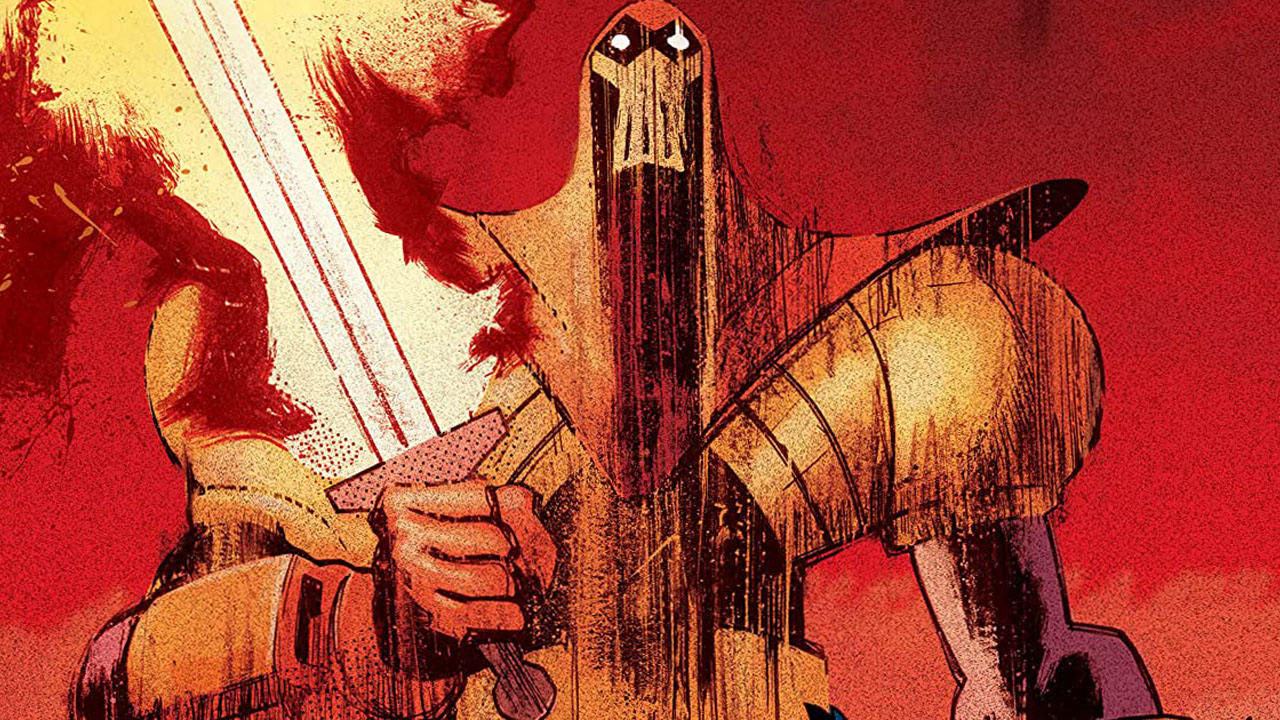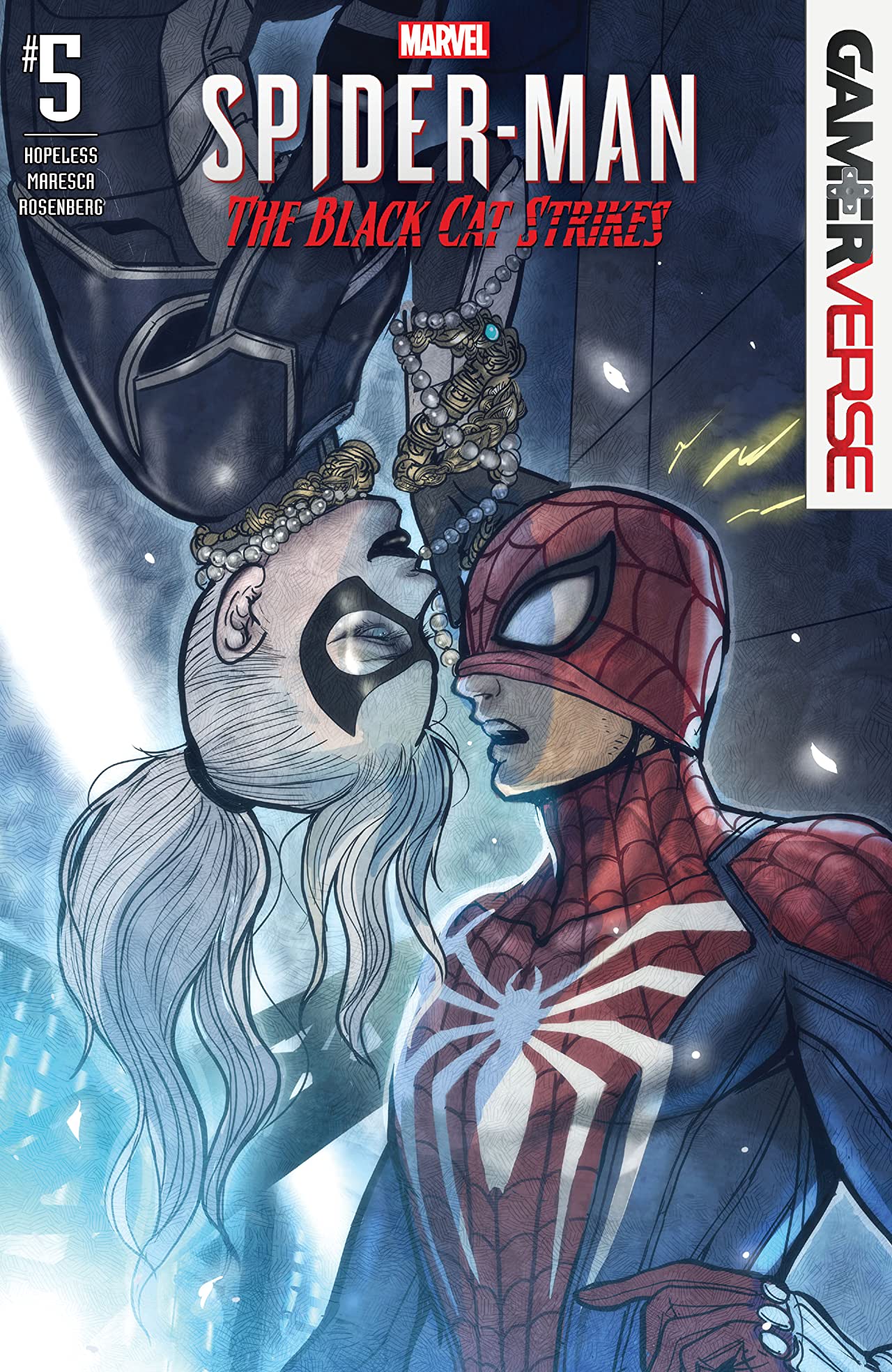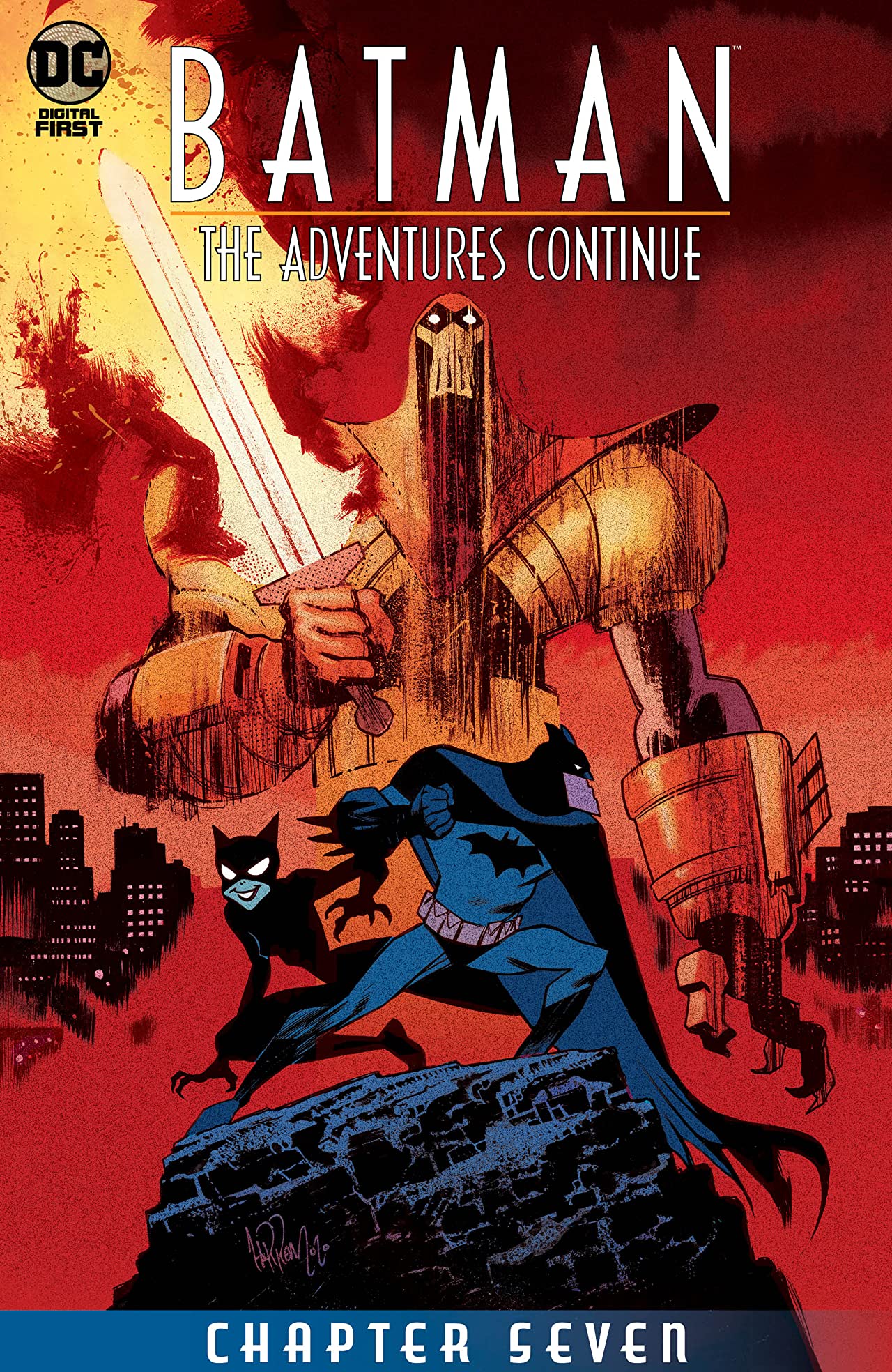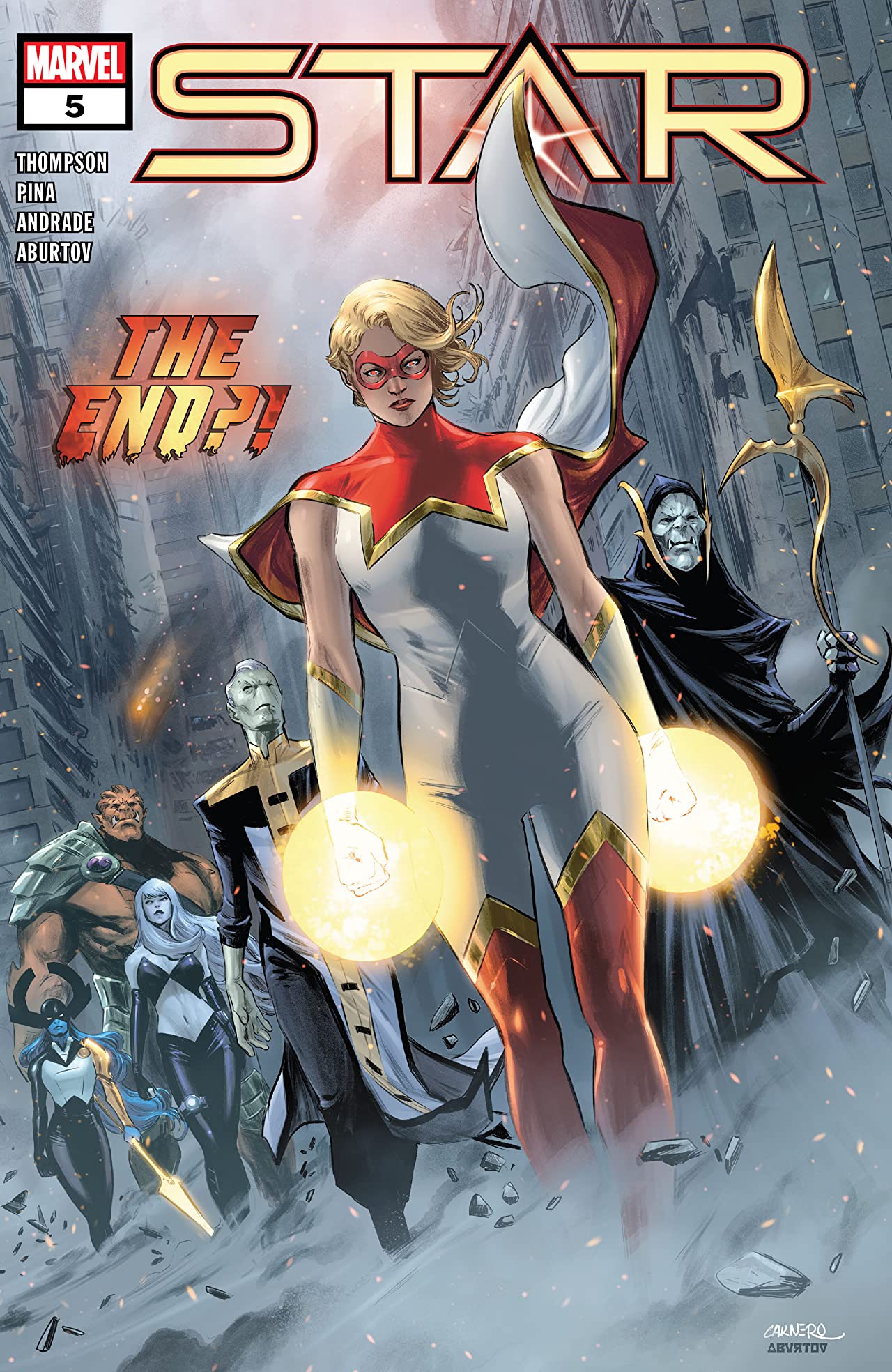Best Shots Rapid-Fire Reviews: Black Cat Strikes #5, The Plot #5, more
As well as Batman: The Adventures Continue #7, Star #5, and Billionaire Island #2

Greetings, 'Rama readers! Ready for your pellets? Best Shots has your back with this week's Rapid-Fire Reviews! Let's kick off today's column with Marvel's Spider-Man: The Black Cat Strikes…

Marvel's Spider-Man: The Black Cat Strikes #5 (Published by Marvel Comics; Review by David Pepose; 'Rama Rating: 5 out of 10): After an emotional chapter last issue, writer Dennis Hallum and artist Luca Maresca find themselves struggling with the Spider-Man Playstation game's structure in their final issue of Marvel's Spider-Man: The Black Cat Strikes #5. With the Black Cat alive and well, the stakes of this series drop significantly, as Spidey himself feels almost ancillary to the defeat of the rampaging Hammerhead. (You can almost sense Hallum bristling when he has to include game details like Hammerhead's blue-glowy shield, or Spidey holding Hammerhead steady for Silver Sable to laser him in the head. Metal plate or not, wouldn't that immediately kill the man?) Hallum's pacing operates in fits and starts, as Felicia tries to pull off her last score, but none of the pieces make sense. Maresca's artwork for Spidey is solid, but outside of the acrobatic action sequences, the talkier bits still feel a bit nondescript. Hallum and Maresca have made some attempts to steal readers' hearts with Marvel's Spider-Man: The Black Cat Strikes, but I'm not sure this video game tie-in series necessarily gets away with it.

Batman: The Adventures Continue #7 (Published by DC; Review by David Pepose; 'Rama Rating: 6 out of 10): As a longtime Azrael fan, I was pleasantly surprised by Batman: The Adventures Continue #7. While the series has typically had a bit of a pacing problem, for the most part writers Paul Dini and Alan Burnett keep things fairly tight, as Batman finds himself at odds with St. Dumas' most legendary fighter, as he hunts down Catwoman on the search for a mystical cloth. Dini and Burnett trust the readers and nimbly slot Azrael into Bruce’s training to become a vigilante, providing a shorthand history for the two characters that feels natural and organic. (Even the introduction of AzBats armor works decently, if a bit self-indulgently.) Artist Ty Templeton also has shown marked improvement with how he's able to stack together his panels — the half-page digital format still isn't the best way for his blocky characters to strut their stuff, but it's not nearly as jam-packed as other installments. While the end of this issue feels a little out of left field, this is a solid debut for this series.

Star #5 (Published by Marvel Comics; Review by Matthew Sibley; 'Rama Rating: 5 out of 10): Kelly Thompson structured Star's initial arc in Captain Marvel in such a way that she held off on revealing Ripley Ryan as the cause of Carol’s strife until late in the game. With that in mind, Star's standalone miniseries has been most effective in defining Ripley in terms of being more than just a one-time foil. By having Riley stand against the Black Order, as well as forming a temporary alliance with Carol in the process, Thompson has done a solid job of setting up multiple avenues of where the character could be taken. (Even if the cover warns of "The End?!", it should be apparent she could pop up in the Marvel Universe somewhere down the line.) Javier Pina’s clean linework keeps the present-day fight kinetic as energy radiates all around. Meanwhile, Filipe Andrade's more frantic layouts display childhood memories and traumas cutting into one another and reveals the book's shortcomings as a result. While all involved, including colourist Jesus Aburtov who bridges the two artists' work, have managed to suggest who Star could be in the future, the book hasn't given enough space and depth to explore who Ripley was previously to fully understand her mindset in the present.

The Plot #5 (Published by Vault Comics; Review by Joey Edsall; 'Rama Rating: 10 out of 10): The Plot's first four-issue arc was one of the strongest titles of late 2019 and early 2020, and was a synthesis of stellar horror storytelling with substance and a palpably atmospheric art style that created something special with Vault's inaugural Nightfall title. Writers Michael Moreci and Tim Daniel manage to kick-off their second arc with a comic that surpasses their previous high bar of a well-paced, thematically rich narrative. It embraces the generation-spanning Gothic sensibilities that were previously established and runs with them in an interesting direction. Artist Joshua Hixson and colorist Kurt Michael Russel are instrumental in the mood of this book, and the way it balances out 17th-century flashback tones with the heavy shadows, otherworldly violets, and sickly blue-greens of the comics more fantastical sequences is truly a sight to behold. Art and story both become progressively more horrifying and otherworldly as you read and witness scarier, stranger things in the flashback that dominates most of the comic. When readers are brought back to Chase Blaine in the present, they are left with a situation so disquieting it's hard to imagine not clamoring for the next chapter in this story.

Billionaire Island #2 (Published by Ahoy Comics; Review by Matthew Sibley; 'Rama Rating: 6 out of 10): What makes Billionaire Island different to The Flintstones, the barbed satire on which Mark Russell, Steve Pugh and Chris Chuckry previously collaborated, is that two issues in, it's already proving to be distinctly more serialised. This team's time in Bedrock saw them weave threads across the series, though they also made sure to have a laser-precise focus on a particular topic each issue to dismantle. Billionaire Island, on the other hand, picks up with the assassin who killed Corey Spagnola assuming their identity in order to make it onto the island, intercut with journalist Shelly Bly looking for a way out of the "hamster cage" she and others have found themselves imprisoned in by Rick Canto. This slower approach results in a book made up of more sporadic laughs (and of a smaller magnitude when they arise). It certainly has its moments — Pugh and Chuckry excel with the physical humor throughout, especially with a sequence draped in green-screens which sees them generate an action sequence from negative space – but the world doesn't feel as sharply realized from these initial glimpses, only able to capture the anti-capitalist sentiments of the times in a broad sense.
Get the best comic news, insights, opinions, analysis and more!
Newsarama is a comic book website covering news, interviews, features, deep dives, reviews and more. Now part of GamesRadar, the website was first established in 1995 by Michael Doran.


